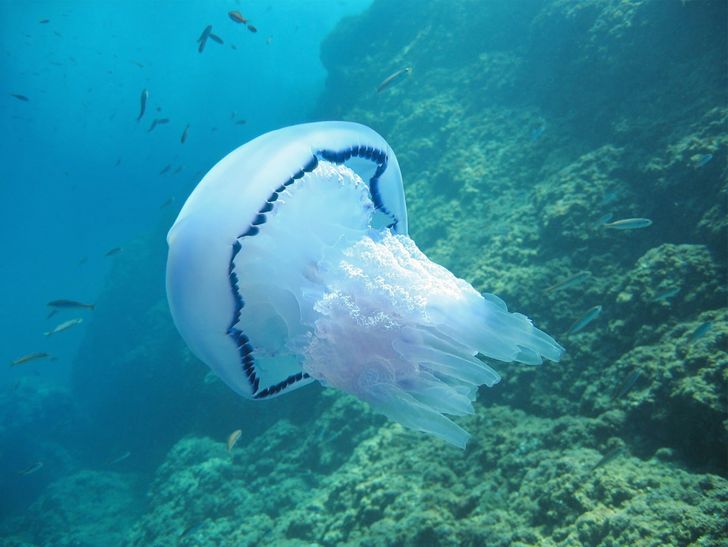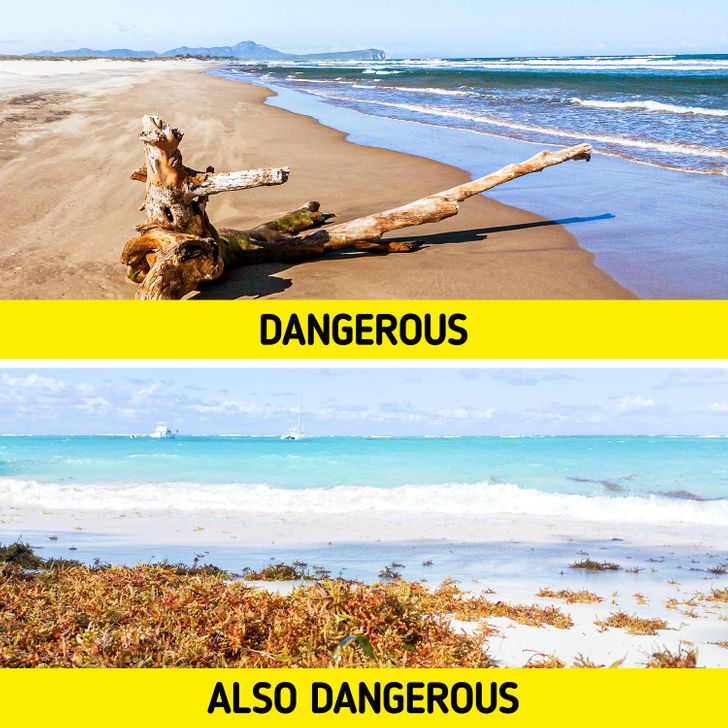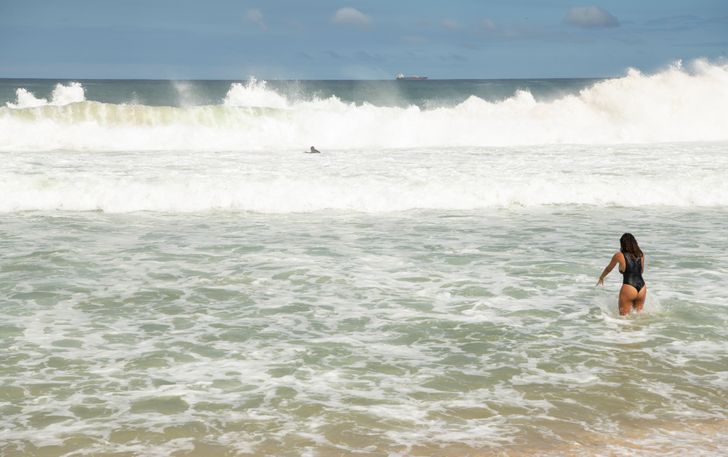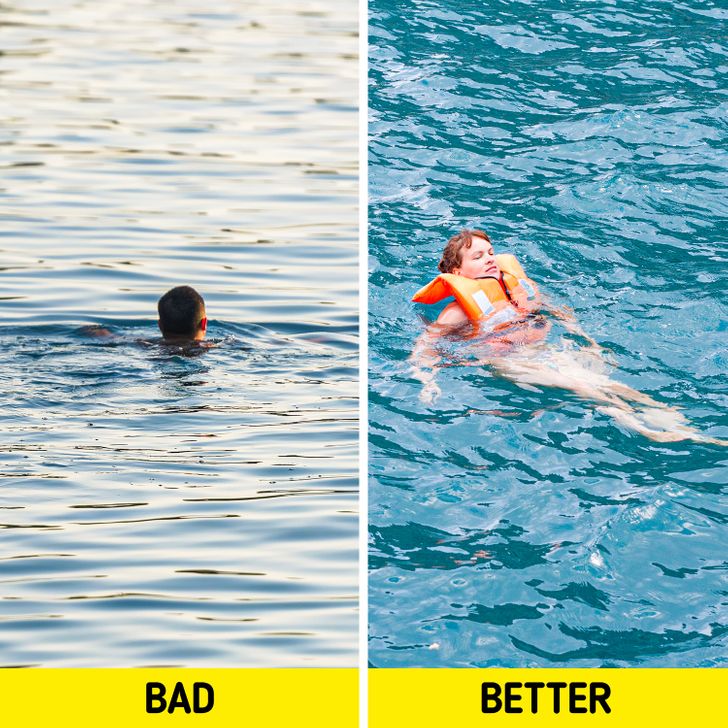I love the sea but I am always so afraid of it... I have good reasons it seems ;)
How to Avoid 8 Obvious Dangers Waiting for Us on the Beach
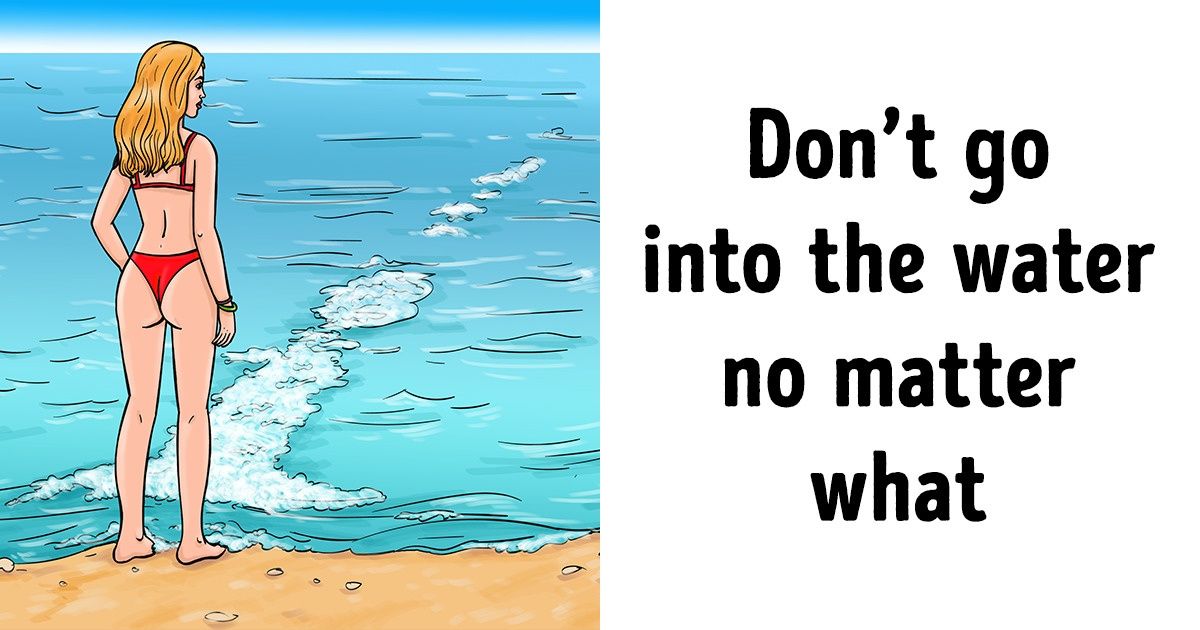
Everyone knows that they can’t swim during a storm, or that there are dangerous animals in the seas and oceans and that big waves can carry you far away from the shore. But there are some hidden dangers many people have no idea about.
We at Bright Side recommend being very careful when swimming and we want to remind you about the dangers that you can encounter while having fun in the sun at the seashore.
1. Quicksand
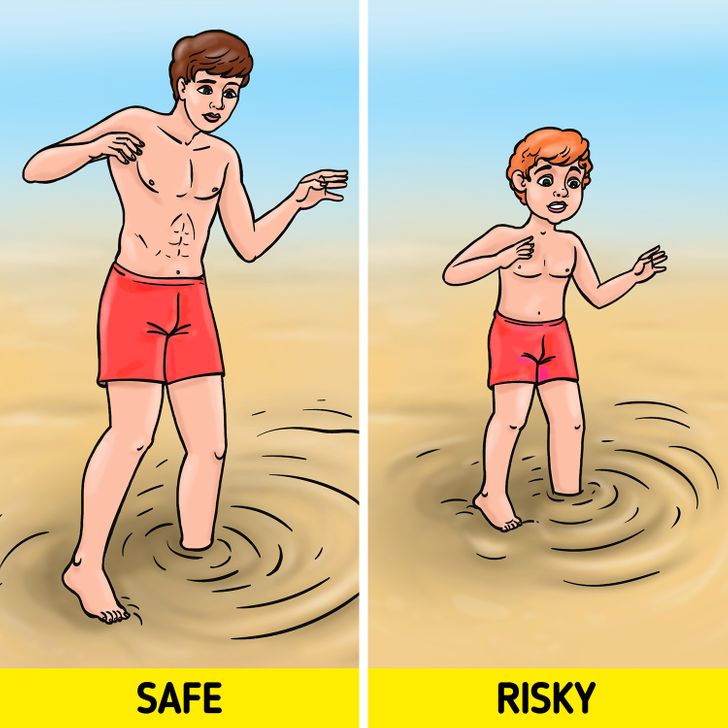
One popular Hollywood movie scene is when a character gets into quicksand and drowns as if it were some kind of swamp. Sometimes, all that is left is the character’s hat.
In real life, this is almost impossible. Quicksand is sand with a lot of water in it that can’t hold anything heavy. Once you step on it, you will start to sink. Different experiments have shown that quicksand can’t drown an adult person — you might get stuck at your waistline. However, once in, you are not likely to get out on your own: in order to free at least one leg, you would have to use a power equal to 100,000 newtons (that’s like lifting a car in the air).
The real danger is that a stuck person could get covered by a wave of water and they could drown. Besides, quicksand is dangerous for kids because they can’t stay calm. They are likely to wave their arms and move their legs trying to get out, which will only lead to worse results.
If you are in quicksand, you should try to lie on your back — this way, your weight will be distributed more equally and you will be able to get out.
2. Barrel jellyfish
Nothing good will come out of seeing a barrel jellyfish: they are venomous. If you touch the tentacles, you will instantly feel a burn. It won’t lead to anything tragic, but it’s pretty painful and the burn might remain on the skin for several hours.
These jellyfish are extremely dangerous for those who love throwing jellyfish at each other: they can easily burn your eyes or lips. Also, don’t pick up dead barrel jellyfish: even after they’re dead, they’re still venomous.
When there are too many of these jellyfish in the sea, the authorities prohibit swimming in the water. Don’t ignore this warning, because it’s one thing to touch one barrel jellyfish by accident, but it’s a totally different thing to be surrounded by dozens or even hundreds of them. So, when you go into the water, look around yourself — they are very hard to miss.
They live in the northeast Atlantic, as well as in the Adriatic, Mediterranean Sea, Black Sea and the Sea of Azov.
3. Cross sea
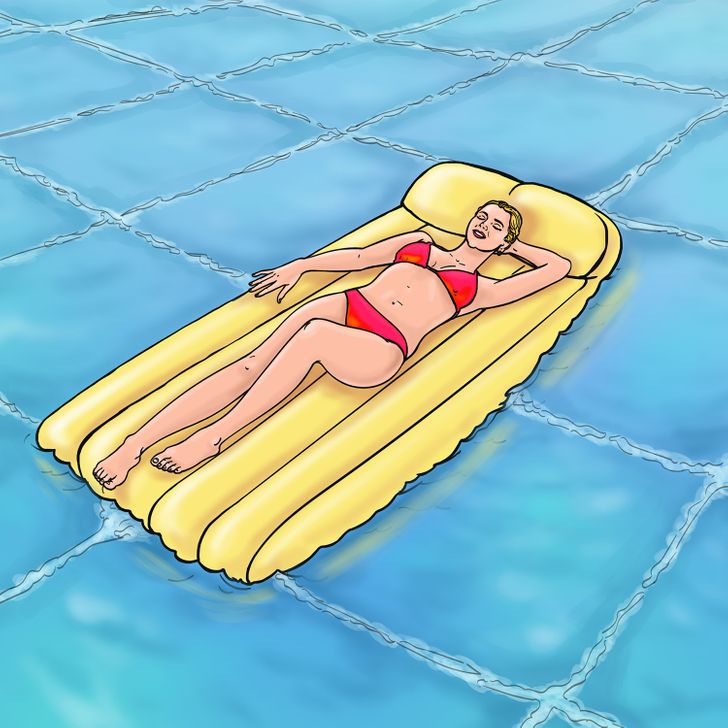
Cross sea is a rare and beautiful, yet extremely dangerous phenomenon. It appears when the underwater current makes the water go one way, while the wind makes it move in another direction.
It’s dangerous for ships and people to be in the water during this occurrence. If you see something like this, get to the shore as fast as possible: the waves move very fast and you can be carried away in an instant.
4. Sand fleas
There are actually different types of creatures that are called sand fleas, but it usually refers to crustaceans that can jump high.
Generally speaking, these pests can’t really hurt humans. They can only cause some discomfort. They love wet places and washed-up seaweed. If they bite a person, the bite will itch, get red, and be a little painful. The problem is, they don’t travel alone. If you got bitten by one of them, you will soon find others and dozens of bites are no fun at all.
The word “sand flea” is also used to refer to parasitic insects that live in sandy areas, like sand flies or tropical jiggers. Some of these bugs can be dangerous. The male jiggers just bite but the females of the species go under the skin to lay eggs.
The best way to avoid these creatures is to not walk barefoot on washed-up seaweed or on the sand late at night when it’s cold. Also, you should wear special shoes for swimming.
5. Rip current

Rip currents are perpendicular to the shore and can appear anywhere. The speed of the current is really intense — if a person steps in the water, they will instantly be carried away in the sea. Usually, the corridors of the current are narrow and not dangerous, but sometimes they can be up to 80 feet in width and about the same in length.
If you see a swirling line of water perpendicular to the shore, under no circumstances should you go into the water (especially if you can’t swim). If you somehow end up in a rip current, don’t try to swim back to the shore — swim parallel to the shore to try to leave the area of the current. As soon as you feel that you’re out, you can return to the shore.
6. Shorebreaks
A beautiful, yet extremely dangerous phenomenon is a shorebreak. Many people love watching it while sitting right on the beach. But sometimes, these waves are so big and powerful that they may fall on people, drop them to the ground, and carry them into the sea.
Most of the time, the worst thing that happens is a broken nose, but sometimes these waves can even break bones. So, it is better to watch them from a safe distance.
7. Waves that cover your entire body when you’re swimming
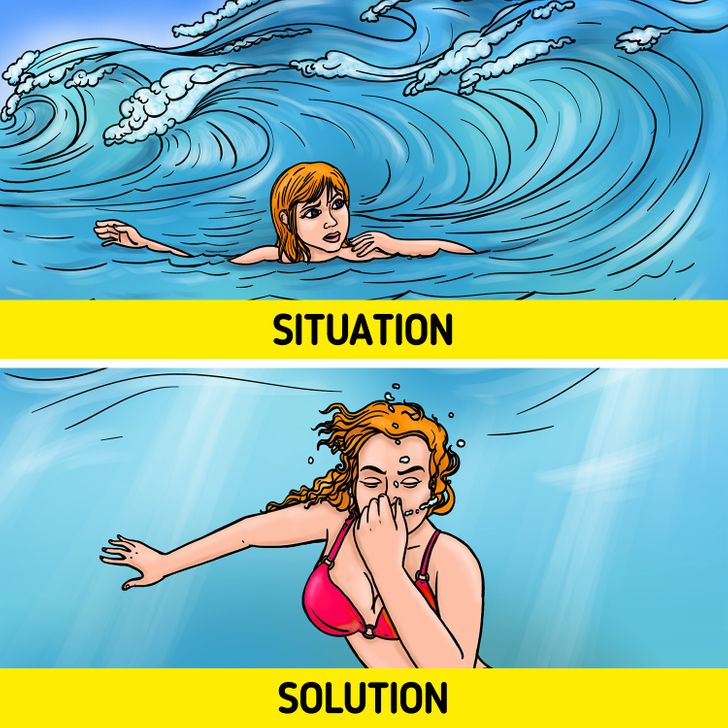
When the water is rough, it is never a good idea to go swimming, but many people still do. If you are far away from the shore and the waves are so big that they cover your entire body, you need to dive under the wave while holding your nose. If you try to fight the big waves, you might swallow too much water and start panicking.
When you are swimming toward the shore, look back. Every time you see a coming big wave, dive under it.
8. If you are carried away to the sea
If you are carried away to the sea or you are swimming very far from the shore and you are freezing, don’t try to swim too quickly to try and warm yourself up. In order to prevent hypothermia, you need to relax your arms, control your breathing, move your limbs as little as possible, and get into the fetal position: as if you are sitting in the water hugging your knees. The more of your body that is above the water, the less heat you will lose.
No matter how many rescue teams there are on the beach, your life is always your responsibility. Never forget about these hidden dangers and don’t take risks. Be careful!
Have you ever been in a dangerous situation on the beach? Tell us about your experience in the comments!
Comments
The beach isn't very dangerous where I live, so I always thought movies over did it with their "guards"
Related Reads
12 Jewelry Trends That Can Make You Rethink Your Go-To Pieces

6 Myths That Movies Made Us Believe

8 Behaviors That Can Quietly Sabotage Marriages, According to Psychologists

15 Stories That Remind Us to Stay Kind, Even When the World Isn’t

I Refuse to Spend My Savings to Rescue My Sister’s Kids, My Money Is Not a Family Fund

I Refuse to Beg for Time With My Grandson

I Refuse to Obey My Pregnant DIL’s Demand to Turn a Merry Christmas Into a Vegan One

I Refuse to Share My Inheritance With My Sister—She Doesn’t Deserve a Penny of It

I Refused to Let My Husband Be a Birth Partner for His Best Friend, Now I’m the Villain

12 Moments That Inspire Us to Stay Kind, Even If Life Feels Impossible

I Refused to Let Mom Move In With Me—My Privacy Isn’t Up for Debate

I Demanded Compensation for My Work Injury—My Boss Got HR Involved

